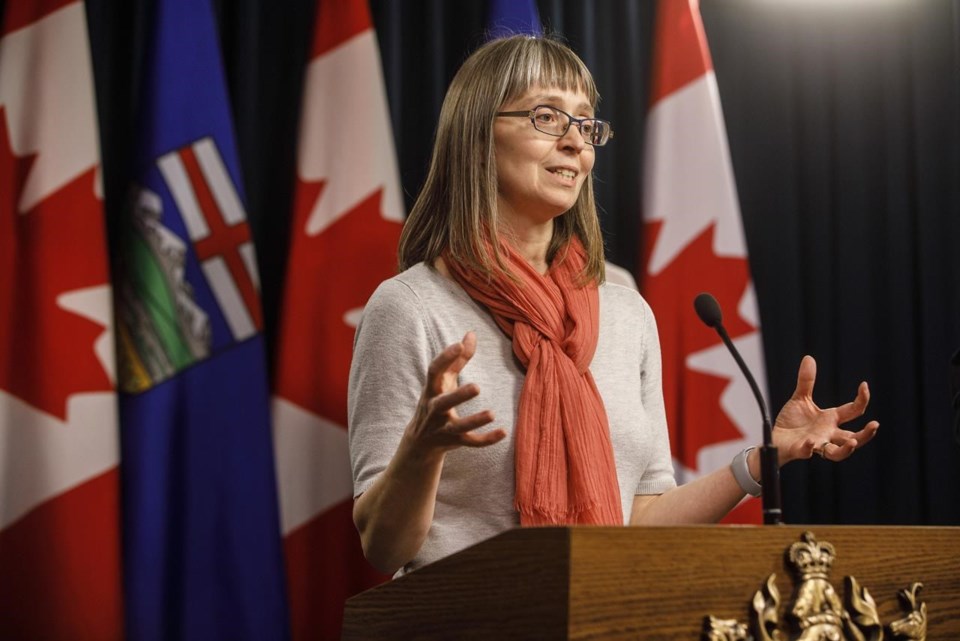CALGARY — COVID-19 hospitalizations are the focus of Alberta's road map for gradually opening up more businesses and activities, but the province's top doctor says a different criteria will factor into whether to slow down or tighten up.
Hospitalizations are a lagging indicator. It could be weeks between cases being identified and those people being sick enough to need medical care. It's a less-than-current snapshot of how the novel coronavirus is spreading.
Dr. Deena Hinshaw, chief medical officer of health, said Monday the plan is to monitor leading indicators such as new case numbers, test positivity rates and how many new infections result from each case.
"Those almost act as sort of an emergency brake," she said.
"If we meet those hospitalization numbers, but all of our leading indicators are escalating in a concerning way, then we would pause our move forward — and we may indeed need to move backward."
The number of people in hospital with COVID-19 provincewide is below 600, down from the above-900 levels of late December and early January.
So, as of next Monday, Premier Jason Kenney has said some restrictions will be eased on indoor fitness centres, school sports and restaurants and bars.
If hospitalizations drop below 450, the rules could be loosened for retail businesses, community halls, hotels, banquet halls and conference centres.
Casinos, museums, movie theatres, places of worship and adult sports could have relaxed measures if hospitalizations drop below 300
And if there's a drop below 150, a wide array of activities from amusement parks to funeral receptions could open up.
There would be increments of at least three weeks between each stage.
Dr. Christopher Mody, who heads the department of microbiology, immunology and infectious diseases at the University of Calgary's Cumming School of Medicine, said if the goal is to ease restrictions while protecting the health-care system, the Alberta government is taking the right approach.
"Hospitalizations are good for lifting restrictions," he said. "But they're the wrong indicator when you're imposing restrictions."
If, all of a sudden there's a surge in cases as new, more transmissible virus variants take hold, the government can't wait for hospitalizations to go up before acting, he said.
"The ship has already sailed."
Dr. James Talbot, an adjunct professor of public health at the University of Alberta, said it takes at least a month before a change in restrictions affects hospitalization numbers, so the government's three-week window is too short.
Nor does looking at a single provincial number account for whether hospitals in a certain area are overwhelmed.
Talbot added there's less room for error with the risk of new variants first identified in the United Kingdom and South Africa spreading in the community.
As of Monday, Alberta had identified a total of 51 cases of both variants. Six cases in three unrelated households don't have a clear link to travel.
The more the original virus is allowed to replicate, the greater the chance even more dangerous mutations may emerge, Talbot said.
"By opening up, you're adding oxygen to the fire," said Talbot, who also co-chairs the Edmonton Zone Medical Staff Association's COVID-19 committee. "That means that the climb will be steeper than it was before."
But Talbot said it's not all doom and gloom, as Albertans have shown they can successfully tamp down big waves of COVID-19 — last spring and then in recent weeks.
"We've been doing a good job, but if we want to continue to do it, we're going to have to be very, very careful."
This report by The Canadian Press was first published Feb. 2, 2021.
Lauren Krugel, The Canadian Press



